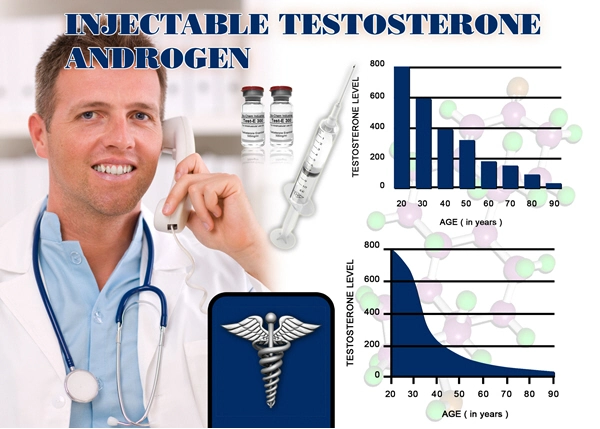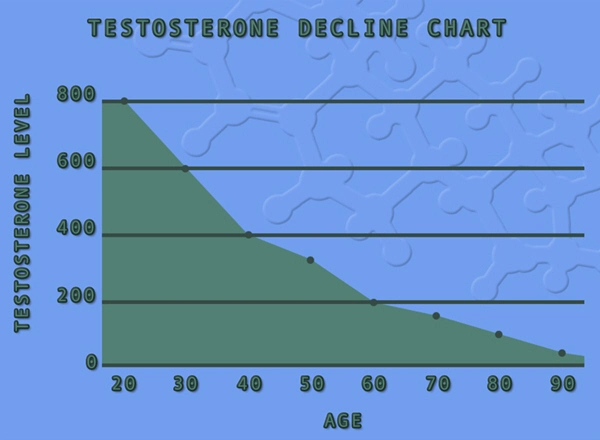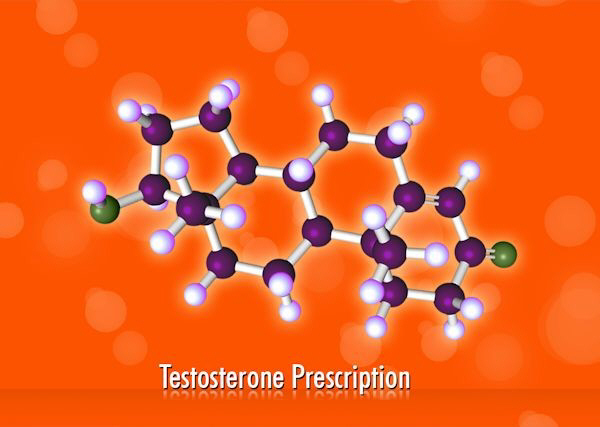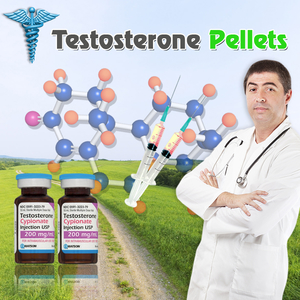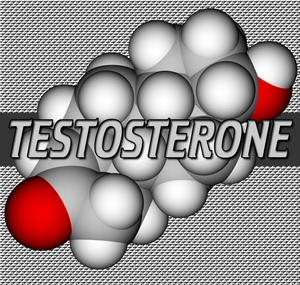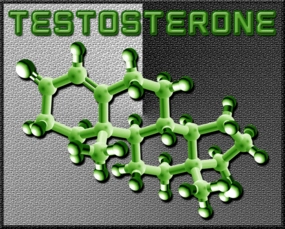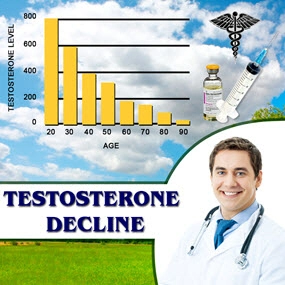Two Food Compounds can reduce Alzheimer's Risk!
At our clinic, we specialize in Hormone Replacement Therapy (HRT). We offer Testosterone Replacement Therapy (TRT), Human Growth Hormone (HGH) Replacement Therapy, Sermorelin Therapy, and several other hormone treatments designed to restore our client's hormones to a youthful, healthy level.
But we don’t stop with HRT.
That’s right. Our treatment regimens included scientific nutrition and what foods to eat and not eat, how to control stress, what proper hydration means, what supplements you should take, the proper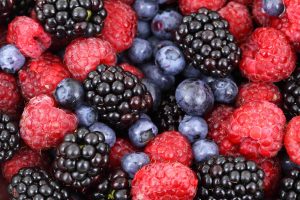 exercise routines that reduce injury and promote longevity, creating a toxin-free environment, and the latest research developments in the fields of longevity, health, and preventing the crippling diseases that are so common and increasing...like Alzheimer’s Disease (AD). Here is an example of recent research on AD.
exercise routines that reduce injury and promote longevity, creating a toxin-free environment, and the latest research developments in the fields of longevity, health, and preventing the crippling diseases that are so common and increasing...like Alzheimer’s Disease (AD). Here is an example of recent research on AD.
Alzheimer’s Disease (AD) is a universally feared affliction for a good reason: it robs its victims of their humanity by destroying their brains until they have no idea where they are, who their closest family members and friends are, and even who they themselves are.
Alzheimer’s disease is the sixth leading cause of death in the United States, and its occurrence is expected to increase in the coming decades.
Here are the grim statistics:
Around 6.2 million Americans are afflicted with Alzheimer’s disease
More than 1 in 9 people (11.3%) over age 65 have AD.
The percentage of folks with AD rises by 5.3% for ages 65-74, 13.8 % for ages 75-84, and 34.6 for ages 85 and older.
By 2050 it is estimated that 12.7 million people 65 and older will suffer from this dreaded disease
1 in 3 senior citizens dies from AD or another type of dementia. This is more than the deaths from prostate and
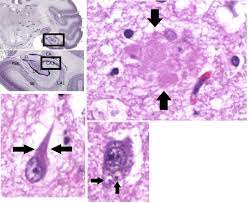 breast cancer combined
breast cancer combinedAD is officially the sixth leading cause of death, but the disease might be responsible for more deaths than recognized.
Deaths resulting from AD between 2000 and 2019 have spiraled by an astonishing 145%! Compare that to the increase of 7.3 % for the nation's number one killer heart disease.
More horrifying, AD is the only top-10 cause of death with no known cure
65% of AD patients are women
The estimated number of caregivers for folks with AD and other related types of dementia is 11.2 million.
These AD caregivers provided 15.3 billion hours of unpaid labor to AD patients in 2020, for an estimated value of $257 billion.
These numbers do not account for the skyrocketing rates of depression for caregivers.
In 2021, the cost of AD care was estimated to explode to $355 billion.
For 2050, AD’s project cost is projected to balloon to an unbelievable $1.1 trillion!
Hopefully, the point is well-taken: AD is a swath of devastation on many levels: physically, mentally, emotionally, spiritually, and financially, for the victims, their caregivers, and our entire society. These costs are immeasurable and tragic. Therefore, anything to slow down this monstrosity should be considered.
A recent study at Tufts University looked at 21 different compounds in Alzheimer’s-afflicted neural cells in the lab, measuring the compounds’ effect on the growth of sticky beta-amyloid plaques that develop in the brains of people with Alzheimer’s.
Of the 21 substances examined, two of them – resveratrol, a polyphenol found in specific plants, food, and red wine, and green tea catechins – reduced the formation of those dangerous plaques with minimal side effects.
Some of the 21 compounds tested lowered the disease progression by 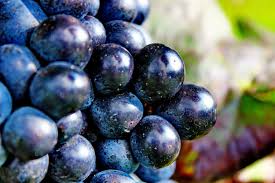 acting as anti-viral agents—slowing Alzheimer’s caused by the herpes virus.
acting as anti-viral agents—slowing Alzheimer’s caused by the herpes virus.
But finding a compound “that could diminish the plaques regardless of the virus component would be ideal because that would show that regardless of the cause of Alzheimer’s, you might still see some kind of improvement,” says Dana Cairns, GBS12. Cairns is a research associate in the Kaplan Lab in the School of Engineering and led the research.
The screening began using simple models, and compounds that showed a positive effect were tested in the 3D neural tissue model. That model is created using a nonreactive silk sponge seeded with human skin cells that, through genetic reprogramming, are transformed into neural stem cell progenitors.
Those cells expand and populate the sponge, “which allows for 3D network formation of neurons similar to what you’d see in the human brain,” Cairns says.
The initial screen lowered the field to five compounds with “really robust prevention of these plaques,” she says. In addition to the green tea compounds and resveratrol, they discovered curcumin (a spice from turmeric), the diabetic drug Metformin, and a substance called citicoline (CDP-Choline) stopped plaques from forming and did not have anti-viral effects.
“We hoped to find compounds that would be harmless and show some level of efficacy,” she said. Green tea compounds and resveratrol met that standard. “We got lucky that some of these showed some pretty strong efficacy,” Cairns said.
“In the case of these compounds that passed the screening, they had virtually no plaques visible after about a week.” Green tea catechins—molecules in the tea leaves that have an antioxidant effect—have been explored as a potential treatment for cancers, and resveratrol has been tested for anti-aging properties.
Cairns warned that effects in the lab “doesn’t always necessarily translate to what you might see in a patient.” Some compounds do not cross the blood-brain barrier required for Alzheimer’s, and some have low bioavailability, meaning they are not easily absorbed into the body or bloodstream.
Still, the discovery is significant since there is no cure for Alzheimer’s or a proven way to slow or stop its progression, apart from several potential drugs developed by pharmaceutical companies that are still in trials, Cairns says.
Compounds like these two that show some efficacy and are proven safe and easily accessible could be taken as a supplement or consumed as part of one’s diet, she adds. “For example, natural sources of resveratrol include red wine, certain fruits such as grapes, blueberries, and cranberries, peanuts, pistachios, and cocoa,” says Cairns.
“While it is empowering to be able to take measures like these to potentially prevent neurodegeneration in the future, it is also important to consult with your healthcare provider before making any major changes to your diet.”
major changes to your diet.”
In the future, a possible area of research for scientists and pharmaceutical companies would be to take the beneficial properties of these compounds and “try to enhance them to make them more bioavailable or make them penetrate the blood-brain barrier a bit better,” Cairns says.
The researchers reported their findings in the journal Free Radical Biology and Medicine.
Contact us for a FREE, no-obligation discussion about the incredible benefits of Hormone Replacement Therapy (HRT)!
References
https://neurosciencenews.com/green-tea-amyloid-alzheimers-21822/
https://www.sciencedirect.com/science/article/pii/S0891584922001770?via%3Dihub
Contact Us Today For A Free Consultation

- Washington D.C. Testosterone Clinics for Low-T and Hormone Therapy [Last Updated On: October 1st, 2024] [Originally Added On: July 16th, 2018]
- Columbia Testosterone Clinics for Low-T and Comprehensive Hormone Therapy [Last Updated On: November 2nd, 2024] [Originally Added On: November 11th, 2018]
- Charleston Testosterone Clinics for Low-T and Comprehensive Hormone Therapy [Last Updated On: August 14th, 2024] [Originally Added On: November 11th, 2018]
- Providence Testosterone Clinics for Low-T and Comprehensive Hormone Therapy [Last Updated On: November 24th, 2024] [Originally Added On: November 11th, 2018]
- Pittsburgh Testosterone Clinics for Low-T and Comprehensive Hormone Therapy [Last Updated On: August 7th, 2024] [Originally Added On: November 11th, 2018]
- Philadelphia Testosterone Clinics for Low-T and Comprehensive Hormone Therapy [Last Updated On: November 15th, 2024] [Originally Added On: November 11th, 2018]
- Erie Testosterone Clinics for Low-T and Comprehensive Hormone Therapy [Last Updated On: June 22nd, 2024] [Originally Added On: November 11th, 2018]
- Allentown Testosterone Clinics for Low-T and Comprehensive Hormone Therapy [Last Updated On: July 10th, 2024] [Originally Added On: November 11th, 2018]
- Salem Testosterone Clinics for Low-T and Comprehensive Hormone Therapy [Last Updated On: March 6th, 2024] [Originally Added On: November 11th, 2018]
- Portland Testosterone Clinics for Low-T and Comprehensive Hormone Therapy [Last Updated On: January 11th, 2024] [Originally Added On: November 11th, 2018]
- Gresham Testosterone Clinics for Low-T and Comprehensive Hormone Therapy [Last Updated On: November 13th, 2024] [Originally Added On: November 11th, 2018]
- Eugene Testosterone Clinics for Low-T and Comprehensive Hormone Therapy [Last Updated On: June 19th, 2024] [Originally Added On: November 11th, 2018]
- Tulsa Testosterone Clinics for Low-T and Comprehensive Hormone Therapy [Last Updated On: March 13th, 2024] [Originally Added On: November 11th, 2018]
- Oklahoma City Testosterone Clinics for Low-T and Comprehensive Hormone Therapy [Last Updated On: April 18th, 2024] [Originally Added On: November 11th, 2018]
- Norman Testosterone Clinics for Low-T and Comprehensive Hormone Therapy [Last Updated On: November 20th, 2024] [Originally Added On: November 11th, 2018]
- Toledo Testosterone Clinics for Low-T and Comprehensive Hormone Therapy [Last Updated On: August 21st, 2024] [Originally Added On: November 11th, 2018]
- Dayton Testosterone Clinics for Low-T and Comprehensive Hormone Therapy [Last Updated On: April 4th, 2024] [Originally Added On: November 11th, 2018]
- Columbus Testosterone Clinics for Low-T and Comprehensive Hormone Therapy [Last Updated On: July 24th, 2024] [Originally Added On: November 11th, 2018]
- Cleveland Testosterone Clinics for Low-T and Comprehensive Hormone Therapy [Last Updated On: May 12th, 2024] [Originally Added On: November 11th, 2018]
- Cincinnati Testosterone Clinics for Low-T and Comprehensive Hormone Therapy [Last Updated On: February 5th, 2024] [Originally Added On: November 11th, 2018]
- Akron Testosterone Clinics for Low-T and Comprehensive Hormone Therapy [Last Updated On: November 1st, 2024] [Originally Added On: November 11th, 2018]
- Bismarck Testosterone Clinics for Low-T and Comprehensive Hormone Therapy [Last Updated On: June 17th, 2024] [Originally Added On: November 11th, 2018]
- Winston-Salem Testosterone Clinics for Low-T and Comprehensive Hormone Therapy [Last Updated On: February 15th, 2024] [Originally Added On: November 11th, 2018]
- Wilmington Testosterone Clinics for Low-T and Comprehensive Hormone Therapy [Last Updated On: February 29th, 2024] [Originally Added On: November 11th, 2018]
- Raleigh Testosterone Clinics for Low-T and Comprehensive Hormone Therapy [Last Updated On: May 29th, 2024] [Originally Added On: November 11th, 2018]
- High Point Testosterone Clinics for Low-T and Comprehensive Hormone Therapy [Last Updated On: May 10th, 2024] [Originally Added On: November 11th, 2018]
- Greensboro Testosterone Clinics for Low-T and Comprehensive Hormone Therapy [Last Updated On: July 30th, 2024] [Originally Added On: November 11th, 2018]
- Fayetteville Testosterone Clinics for Low-T and Comprehensive Hormone Therapy [Last Updated On: March 19th, 2024] [Originally Added On: November 11th, 2018]
- Durham Testosterone Clinics for Low-T and Comprehensive Hormone Therapy [Last Updated On: October 24th, 2024] [Originally Added On: November 11th, 2018]
- Charlotte Testosterone Clinics for Low-T and Comprehensive Hormone Therapy [Last Updated On: May 7th, 2024] [Originally Added On: November 11th, 2018]
- Cary Testosterone Clinics for Low-T and Comprehensive Hormone Therapy [Last Updated On: April 16th, 2024] [Originally Added On: November 11th, 2018]
- Yonkers Testosterone Clinics for Low-T and Comprehensive Hormone Therapy [Last Updated On: April 7th, 2024] [Originally Added On: November 11th, 2018]
- Syracuse Testosterone Clinics for Low-T and Comprehensive Hormone Therapy [Last Updated On: January 10th, 2024] [Originally Added On: November 11th, 2018]
- Rochester Testosterone Clinics for Low-T and Comprehensive Hormone Therapy [Last Updated On: May 16th, 2024] [Originally Added On: November 11th, 2018]
- Buffalo Testosterone Clinics for Low-T and Comprehensive Hormone Therapy [Last Updated On: March 5th, 2024] [Originally Added On: November 11th, 2018]
- Albuquerque Testosterone Clinics for Low-T and Comprehensive Hormone Therapy [Last Updated On: September 28th, 2024] [Originally Added On: November 11th, 2018]
- Paterson Testosterone Clinics for Low-T and Comprehensive Hormone Therapy [Last Updated On: September 14th, 2024] [Originally Added On: November 11th, 2018]
- Newark Testosterone Clinics for Low-T and Comprehensive Hormone Therapy [Last Updated On: February 9th, 2024] [Originally Added On: November 11th, 2018]
- Jersey City Testosterone Clinics for Low-T and Comprehensive Hormone Therapy [Last Updated On: September 19th, 2024] [Originally Added On: November 11th, 2018]
- Elizabeth Testosterone Clinics for Low-T and Comprehensive Hormone Therapy [Last Updated On: May 15th, 2024] [Originally Added On: November 11th, 2018]
- Manchester Testosterone Clinics for Low-T and Comprehensive Hormone Therapy [Last Updated On: May 27th, 2024] [Originally Added On: November 11th, 2018]
- Reno Testosterone Clinics for Low-T and Comprehensive Hormone Therapy [Last Updated On: April 26th, 2024] [Originally Added On: November 11th, 2018]
- North Las Vegas Testosterone Clinics for Low-T and Comprehensive Hormone Therapy [Last Updated On: May 2nd, 2024] [Originally Added On: November 11th, 2018]
- Las Vegas Testosterone Clinics for Low-T and Comprehensive Hormone Therapy [Last Updated On: February 7th, 2024] [Originally Added On: November 11th, 2018]
- Henderson Testosterone Clinics for Low-T and Comprehensive Hormone Therapy [Last Updated On: August 17th, 2024] [Originally Added On: November 11th, 2018]
- Omaha Testosterone Clinics for Low-T and Comprehensive Hormone Therapy [Last Updated On: November 17th, 2024] [Originally Added On: November 11th, 2018]
- Lincoln Testosterone Clinics for Low-T and Comprehensive Hormone Therapy [Last Updated On: October 30th, 2024] [Originally Added On: November 11th, 2018]
- Billings Testosterone Clinics for Low-T and Comprehensive Hormone Therapy [Last Updated On: June 8th, 2024] [Originally Added On: November 11th, 2018]
- St Louis Testosterone Clinics for Low-T and Comprehensive Hormone Therapy [Last Updated On: July 1st, 2024] [Originally Added On: November 11th, 2018]
- Springfield Testosterone Clinics for Low-T and Comprehensive Hormone Therapy [Last Updated On: May 1st, 2024] [Originally Added On: November 11th, 2018]
- Kansas City Testosterone Clinics for Low-T and Comprehensive Hormone Therapy [Last Updated On: February 4th, 2024] [Originally Added On: November 11th, 2018]
- Independence Testosterone Clinics for Low-T and Comprehensive Hormone Therapy [Last Updated On: November 12th, 2024] [Originally Added On: November 11th, 2018]
- Columbia Testosterone Clinics for Low-T and Comprehensive Hormone Therapy [Last Updated On: November 14th, 2024] [Originally Added On: November 11th, 2018]
- Jackson Testosterone Clinics for Low-T and Comprehensive Hormone Therapy [Last Updated On: September 20th, 2024] [Originally Added On: November 11th, 2018]
- St Paul Testosterone Clinics for Low-T and Comprehensive Hormone Therapy [Last Updated On: October 12th, 2024] [Originally Added On: November 11th, 2018]
- Rochester Testosterone Clinics for Low-T and Comprehensive Hormone Therapy [Last Updated On: September 3rd, 2024] [Originally Added On: November 11th, 2018]
- Minneapolis Testosterone Clinics for Low-T and Comprehensive Hormone Therapy [Last Updated On: November 6th, 2024] [Originally Added On: November 11th, 2018]
- Warren Testosterone Clinics for Low-T and Comprehensive Hormone Therapy [Last Updated On: August 10th, 2024] [Originally Added On: November 11th, 2018]
- Sterling Heights Testosterone Clinics for Low-T and Comprehensive Hormone Therapy [Last Updated On: October 13th, 2024] [Originally Added On: November 11th, 2018]
- Lansing Testosterone Clinics for Low-T and Comprehensive Hormone Therapy [Last Updated On: April 25th, 2024] [Originally Added On: November 11th, 2018]
- Grand Rapids Testosterone Clinics for Low-T and Comprehensive Hormone Therapy [Last Updated On: April 19th, 2024] [Originally Added On: November 11th, 2018]
- Flint Testosterone Clinics for Low-T and Comprehensive Hormone Therapy [Last Updated On: May 20th, 2024] [Originally Added On: November 11th, 2018]
- Detroit Testosterone Clinics for Low-T and Comprehensive Hormone Therapy [Last Updated On: March 23rd, 2024] [Originally Added On: November 11th, 2018]
- Ann Arbor Testosterone Clinics for Low-T and Comprehensive Hormone Therapy [Last Updated On: October 3rd, 2024] [Originally Added On: November 11th, 2018]
- Worcester Testosterone Clinics for Low-T and Comprehensive Hormone Therapy [Last Updated On: October 28th, 2024] [Originally Added On: November 11th, 2018]
- Springfield Testosterone Clinics for Low-T and Comprehensive Hormone Therapy [Last Updated On: October 15th, 2024] [Originally Added On: November 11th, 2018]
- Lowell Testosterone Clinics for Low-T and Comprehensive Hormone Therapy [Last Updated On: January 25th, 2024] [Originally Added On: November 11th, 2018]
- Cambridge Testosterone Clinics for Low-T and Comprehensive Hormone Therapy [Last Updated On: February 6th, 2024] [Originally Added On: November 11th, 2018]
- Boston Testosterone Clinics for Low-T and Comprehensive Hormone Therapy [Last Updated On: August 16th, 2024] [Originally Added On: November 11th, 2018]
- Baltimore Testosterone Clinics for Low-T and Comprehensive Hormone Therapy [Last Updated On: March 7th, 2024] [Originally Added On: November 11th, 2018]
- Augusta Testosterone Clinics for Low-T and Comprehensive Hormone Therapy [Last Updated On: May 21st, 2024] [Originally Added On: November 11th, 2018]
- Shreveport Testosterone Clinics for Low-T and Comprehensive Hormone Therapy [Last Updated On: February 2nd, 2024] [Originally Added On: November 11th, 2018]
- New Orleans Testosterone Clinics for Low-T and Comprehensive Hormone Therapy [Last Updated On: March 16th, 2024] [Originally Added On: November 11th, 2018]
- Lafayette Testosterone Clinics for Low-T and Comprehensive Hormone Therapy [Last Updated On: September 24th, 2024] [Originally Added On: November 11th, 2018]
- Baton Rouge Testosterone Clinics for Low-T and Comprehensive Hormone Therapy [Last Updated On: October 2nd, 2024] [Originally Added On: November 11th, 2018]
- Louisville Testosterone Clinics for Low-T and Comprehensive Hormone Therapy [Last Updated On: February 23rd, 2024] [Originally Added On: November 11th, 2018]
- Lexington Testosterone Clinics for Low-T and Comprehensive Hormone Therapy [Last Updated On: October 11th, 2024] [Originally Added On: November 11th, 2018]
- Wichita Testosterone Clinics for Low-T and Comprehensive Hormone Therapy [Last Updated On: March 26th, 2024] [Originally Added On: November 11th, 2018]
- Topeka Testosterone Clinics for Low-T and Comprehensive Hormone Therapy [Last Updated On: February 28th, 2024] [Originally Added On: November 11th, 2018]
- Overland Park Testosterone Clinics for Low-T and Comprehensive Hormone Therapy [Last Updated On: February 20th, 2024] [Originally Added On: November 11th, 2018]
Word Count: 1114

